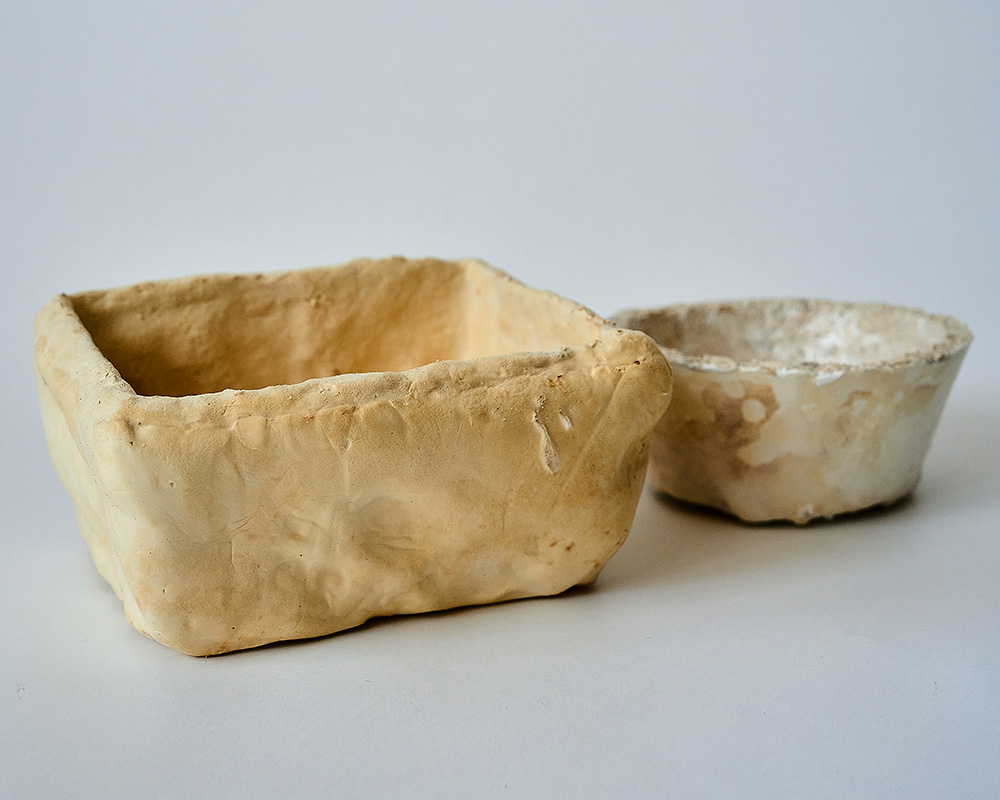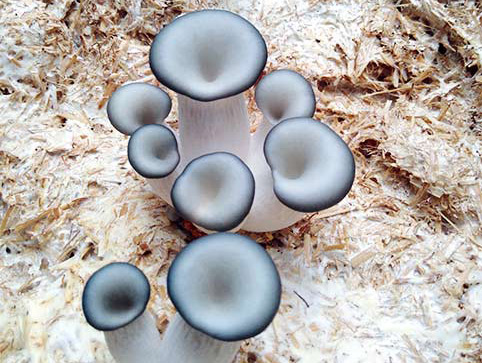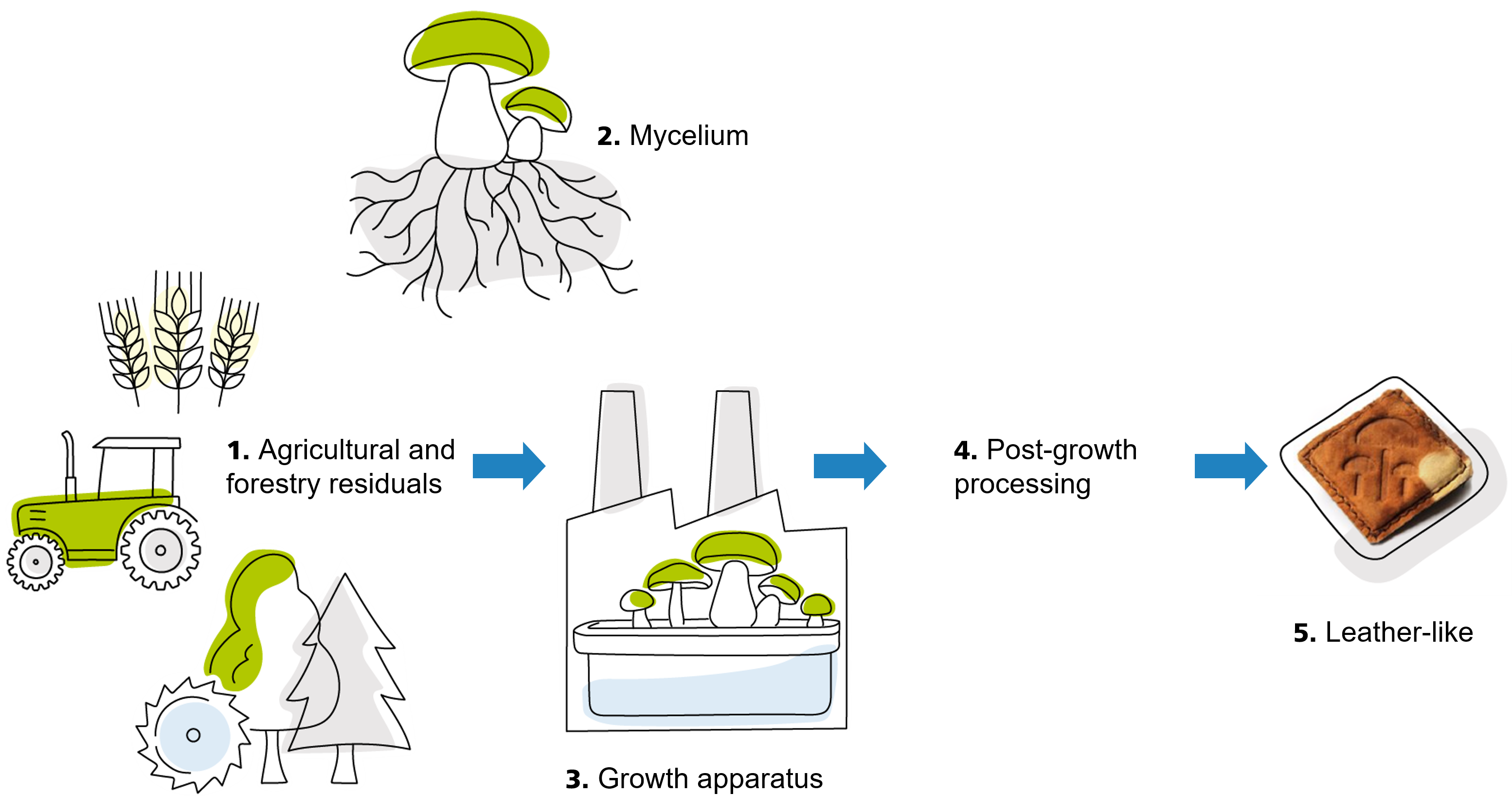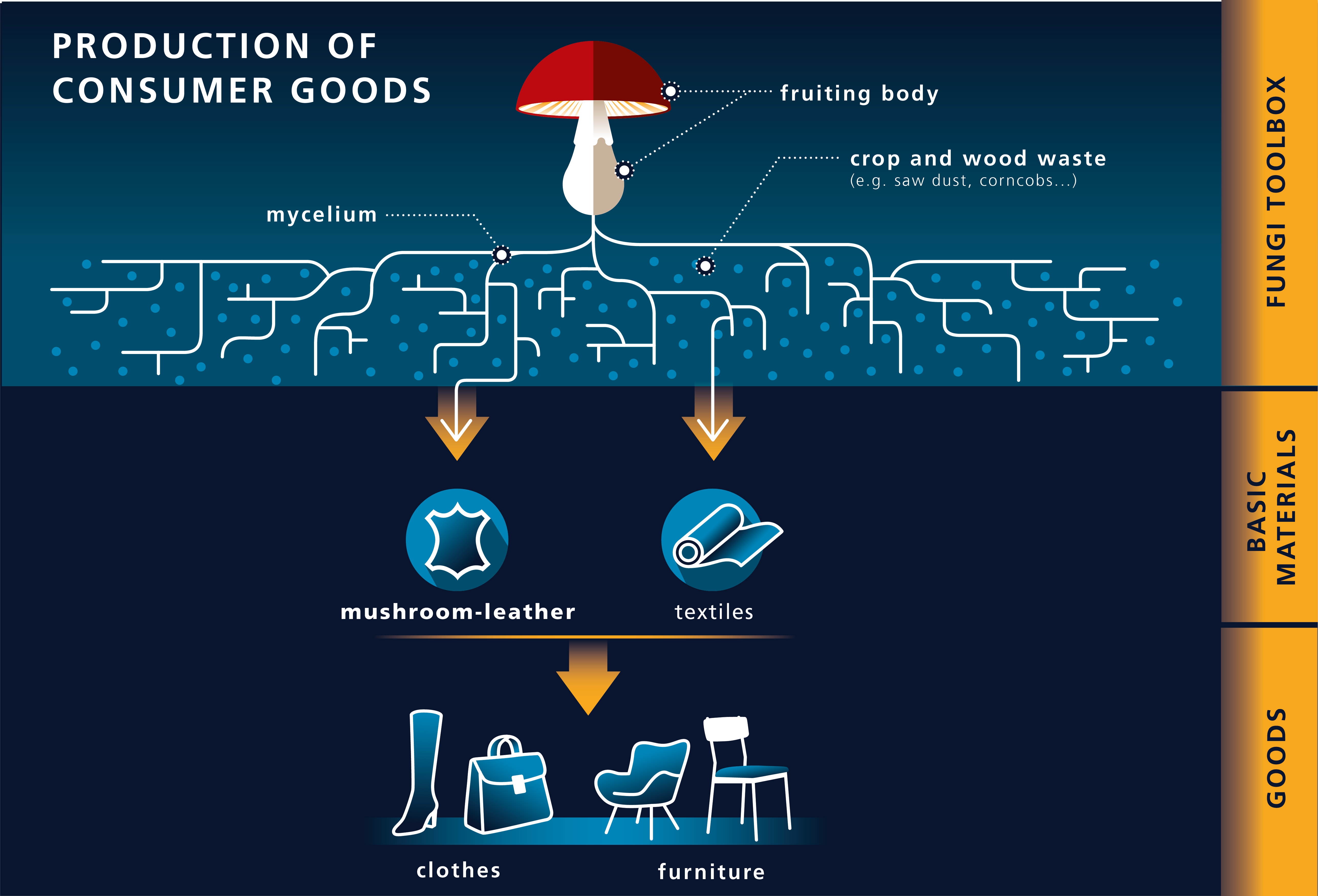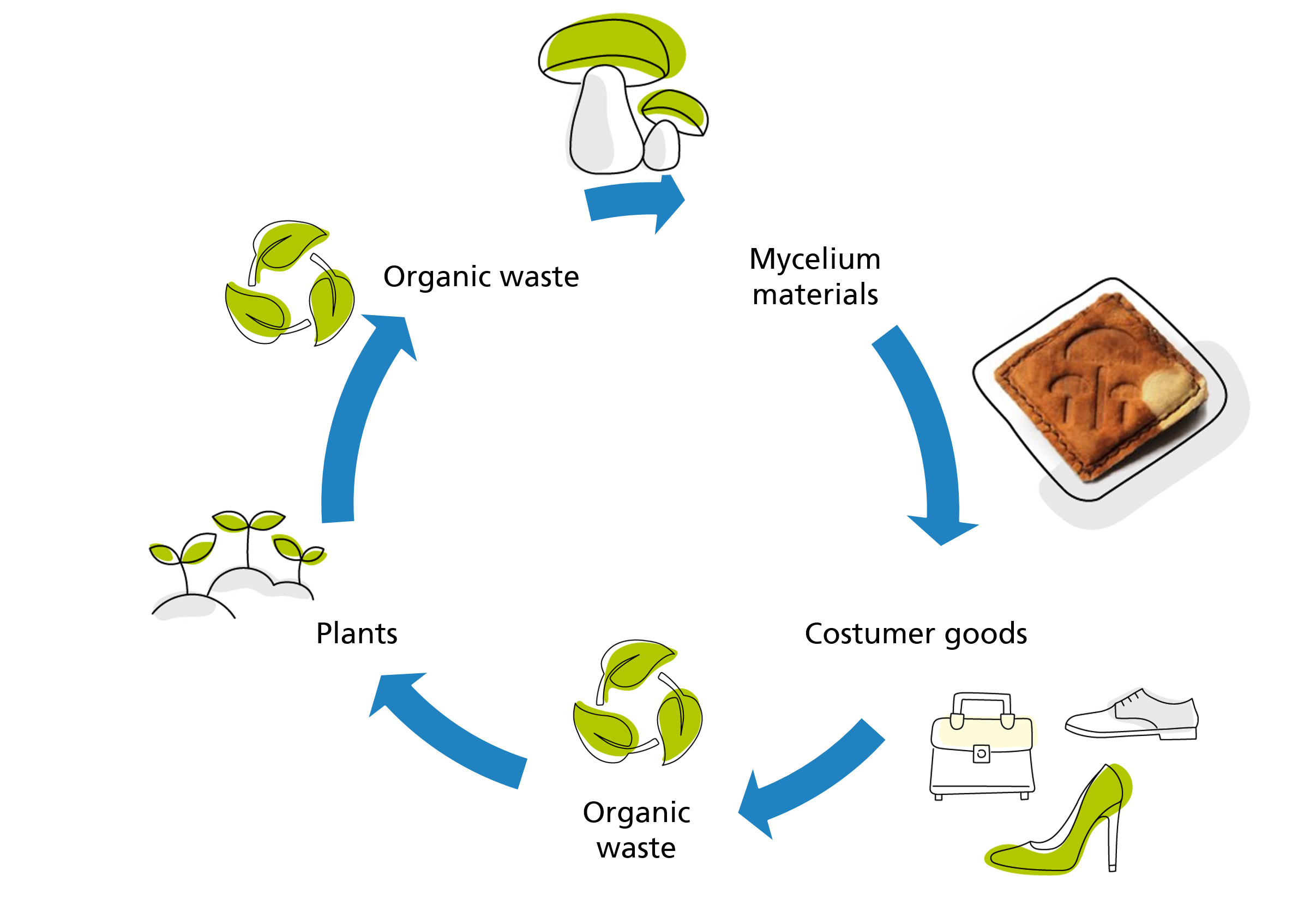Fungal mycelium is a natural, renewable raw material that occurs naturally in large quantities in the soil. It offers enormous potential for developing biodegradable materials. To date, fungal materials exist only very sporadically on the market. However, the demand for sustainable and animal-free materials is high.
At the Fraunhofer IAP, we develop novel, sustainable and biodegradable materials using networks of mycelia from various fungi incubated with residual materials from agriculture and forestry, such as reed cuttings or sawdust.
In addition to materials made from pure mycelium, we also produce mycelium-based natural fiber composites with new properties. Materials from fungi have the potential for versatile applications – from accessories for clothing and furniture to packaging, construction and insulation materials.
Current projects:
